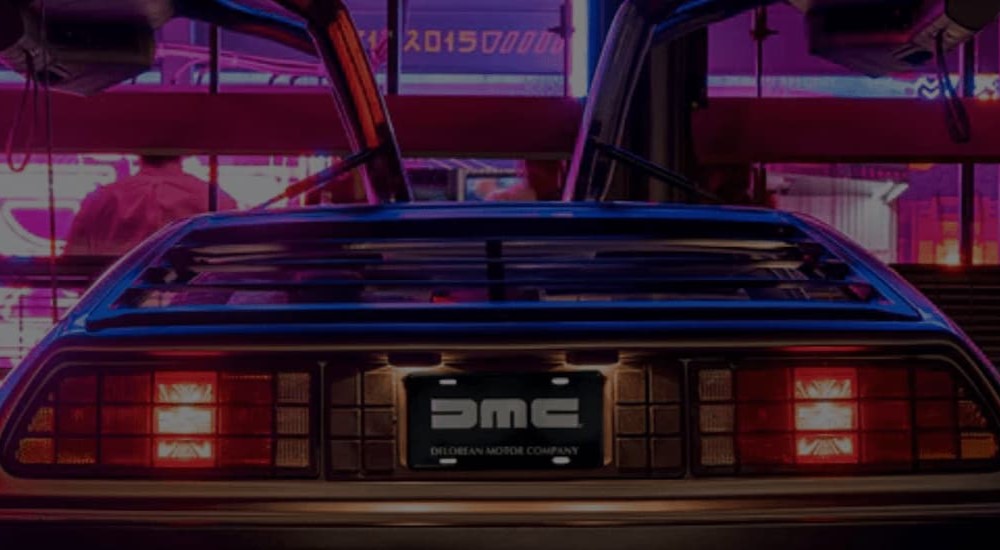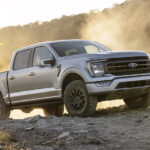Sometimes, bi- name car creators like to get creative when designing their vehicles. This can lead to a variety of different results. Sometimes that creativity pays off in a big way, and the finished product goes on to become an iconic vehicle. Other times, this isn’t exactly the case, resulting in vehicles that look like they belong in an art museum rather than on the road.
Sometimes these types of experimental vehicles are created for a limited release, primarily serving the purpose of promoting an event or product. Others were manufactured and released commercially, attempting to introduce a new kind of vehicle to the automotive market. Either way, these vehicles are distinct and have a personality all their own, and are sure to make you scour your nearby used car dealership to see if you can spot one of them yourself.
Were the minds behind these vehicles onto something, or were they letting their imaginations run a bit too wild? Some of these vehicles were arguably onto something, while others can only be described as downright odd. Either way, these cars each tried to make a statement with their appearance and design. A few of them stuck the landing, while others, not so much. Regardless of which was more practical or attractive, each of the vehicles you’ll find below shares one thing in common: breaking automotive conventions.
1953 GM Firebird 1 XP-21
In 1953, an attempt to experiment with the first-ever gas turbine powertrain in a car resulted in the Firebird 1 XP-21, a highly unique vehicle that, while never intended for public release, was a highly interesting piece of automotive history. Though the marriage of jet turbines and automobiles never quite took flight, the Firebird model’s exterior appearance sported a fighter-jet inspired look, with a pointed nose and wings jutting out from the middle of the body.
The Firebird even came with a cockpit-style drivers seat which, while not exactly the most friendly for driving with a friend, would’ve been sure to give drivers the sense that they were about to take flight rather than take on the open road. The 1953 Firebird model’s powertrain was capable of producing up to 370 horsepower, an incredible amount for vehicles of that era. While Chrysler built a more well-known short production run of turbine-powered cars from 1963 to 1964, Pontiac built the Firebird 1 XP-21 ten years earlier.
1970 Lancia Stratos Zero
This addition to the list gets points for outside the box thinking, but not for much else. The 1970 Lancia Stratos Zero features an almost wedge-like design that certainly looks aerodynamic, even if at the expense of practicality. Like the Firebird, the Stratos Zero wasn’t designed for consumer release, but rather as a concept sports car to be shown off at the 1970 Turin motor show. Interestingly enough, the vehicle was also featured in the Michael Jackson film Moonwalker.
The sloped design that the vehicle sported featured a large windshield panel through which gave the driver a large head-to-toe field of vision from within the cramped interior. At the back of the vehicle, the engine was on display within a large grille. The vehicle’s V4 engine produced up to 114 horsepower, arguably not enough to justify this sports car’s peculiar design.
Though it seems impractical in nature, the 1970 Lancia Stratos Zero is actually an important piece of sports car history, serving as a sort of precursor to the Lamborghini. Though it likely wouldn’t have been wildly popular with the average consumer, the aerodynamic design it sported served as the basis for many luxury sports cars that preceded the Stratos Zero. And while it had little in common with the Stratos Zero, Lancia would reuse the Stratos name a few years later for its mid-engine sports car designed specifically to compete in the World Rally Championship.
1981 DeLorean DMC-12
When you think of unique cars, one of the first vehicles that comes to mind is likely the famous time-traveling DeLorean from the hit 1985 movie Back to the Future. This film made an entire generation desire nothing more than to open those gullwing doors, hop behind the wheel of the film’s starring vehicle, activate the flux capacitor, and see if it could really go back in time. Because this car was available to the public, this was possible at the time of the film’s release, except the production version did not include a flux capacitor, Mr. Fusion, or the equipment to make it literally fly.
Unfortunately, the DeLorean DMC-12 is also lacking a bit on the performance front. With a 2.6L V6 engine that produced just 130 horsepower and 153 lb-ft of torque, this DeLorean model, while not being the least powerful vehicle on the market, certainly wasn’t the high octane car that was seen on the silver screen. On top of that, its stainless steel body wasn’t exactly lightweight. The car weighed in at 2,844 with a full tank of gas. That’s heavier than a modern Toyota 86 or Subaru BRZ, and with far less horsepower to move it down the road. It would certainly take a while to reach 88 mph.
Despite this, the 1981 DeLorean DMC-12 remains a highly unique and iconic car, the appearance of which is likely to stir up nostalgic feelings in anyone who looks at it. But when looking at the actual specs of Marty McFly’s famous car, it’s clear this DeLorean is likely best enjoyed when watching it on film, rather than actually taking it for a spin.
1942 L’oeuf Electrique
This one wins the title of the strangest vehicle on this list, and possibly ever. The 1942 L’oeuf Electrique, which literally translates to “electric egg,” is the creation of a French engineer by the name of Paul Arzens. Only one of these models was ever made, exclusively for Arzens’ personal use. The name “electric egg” comes from the model’s admittedly odd design, which was almost spherical in nature, with a large windshield and top-to-bottom windows taking up the majority of the front and sides.
The “electric” in the name comes from the fact that this car had an electric powertrain, truly remarkable considering that it was made in the early 1940s. Its top speed was only about 37 mph, so it likely wasn’t the best for getting from point A to point B when pressed for time. But it likely made for interesting trips to the grocery store for Mr. Arzen, which is admirable in its own right.
1956 Buick Centurion
Arguably the most practical vehicle of all the models we’ve discussed was the 1956 Buick Centurion. It was a distinct red and white coupe that gave drivers everywhere a surprisingly accurate window into what the future of the automotive industry would hold. Though only for a limited time, the Buick Centurion was available to consumers, and featured a panoramic glass roof that gave riders the sense that they were driving the car of the future.
What’s most remarkable about the 1956 Buick Centurion is that many of its features were years ahead of their time, such as the dashboard monitor connected to a rear-facing camera, essentially acting as the world’s first rear view camera decades before these became common.
The Buick Centurion was also an incredibly powerful vehicle for its time. It hada V8 engine that produced up to 325 horsepower, an impressive figure for a family vehicle even by today’s standards.
Thinking Outside the Box
The automotive industry isn’t just about making the fastest, most capable vehicles intended purely for practical use. It is also a medium through which singular minds can allow their creativity to shine, not only creating cars in the process, but works of art. True, much of this art cannot translate to practical use, but at the very least it makes for an interesting story.
From the strange, to the iconic, to the almost prophetic, there are all sorts of unique vehicles that have graced the scene over the years, even if they’ve largely been lost to history. No matter how odd they may appear, each of these vehicles display the potential of the automotive industry, and how creativity and engineering can create something special when they come together.




